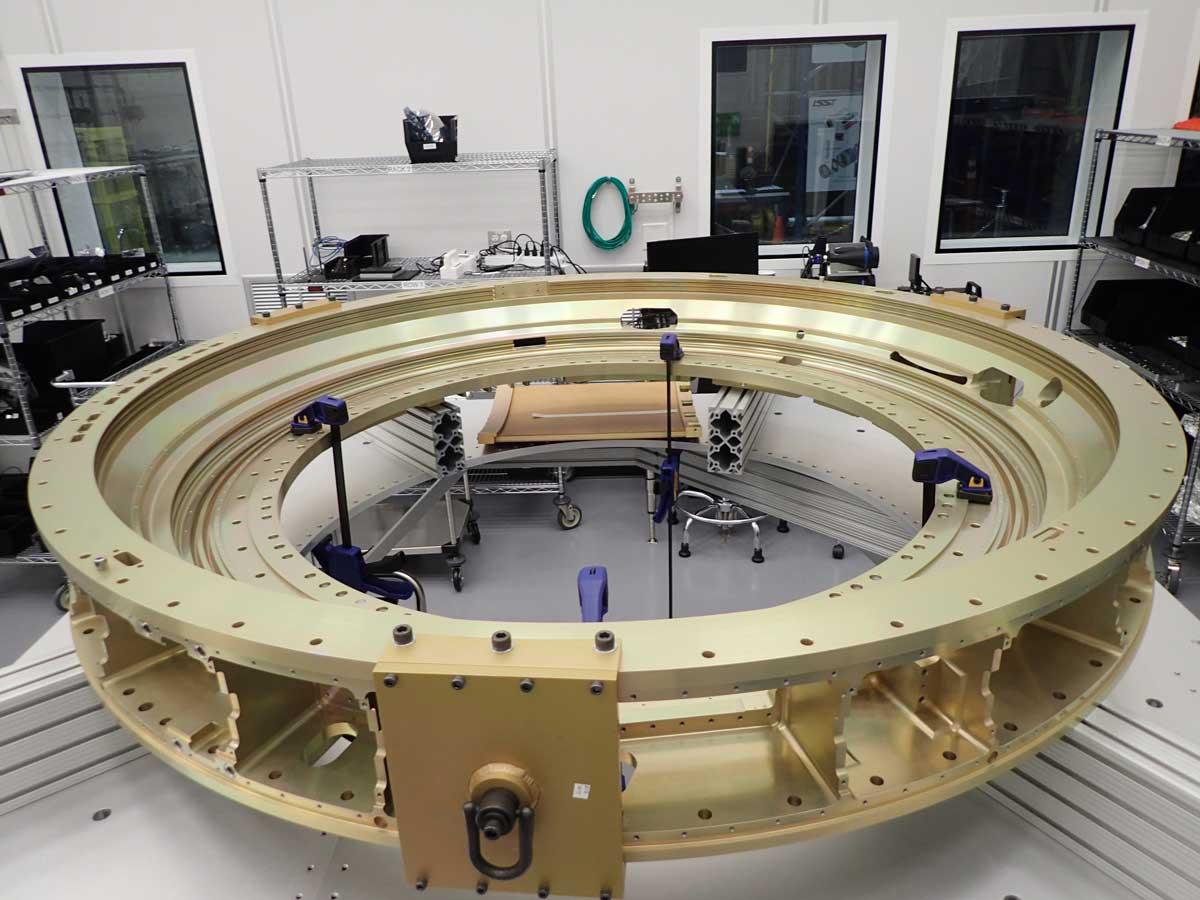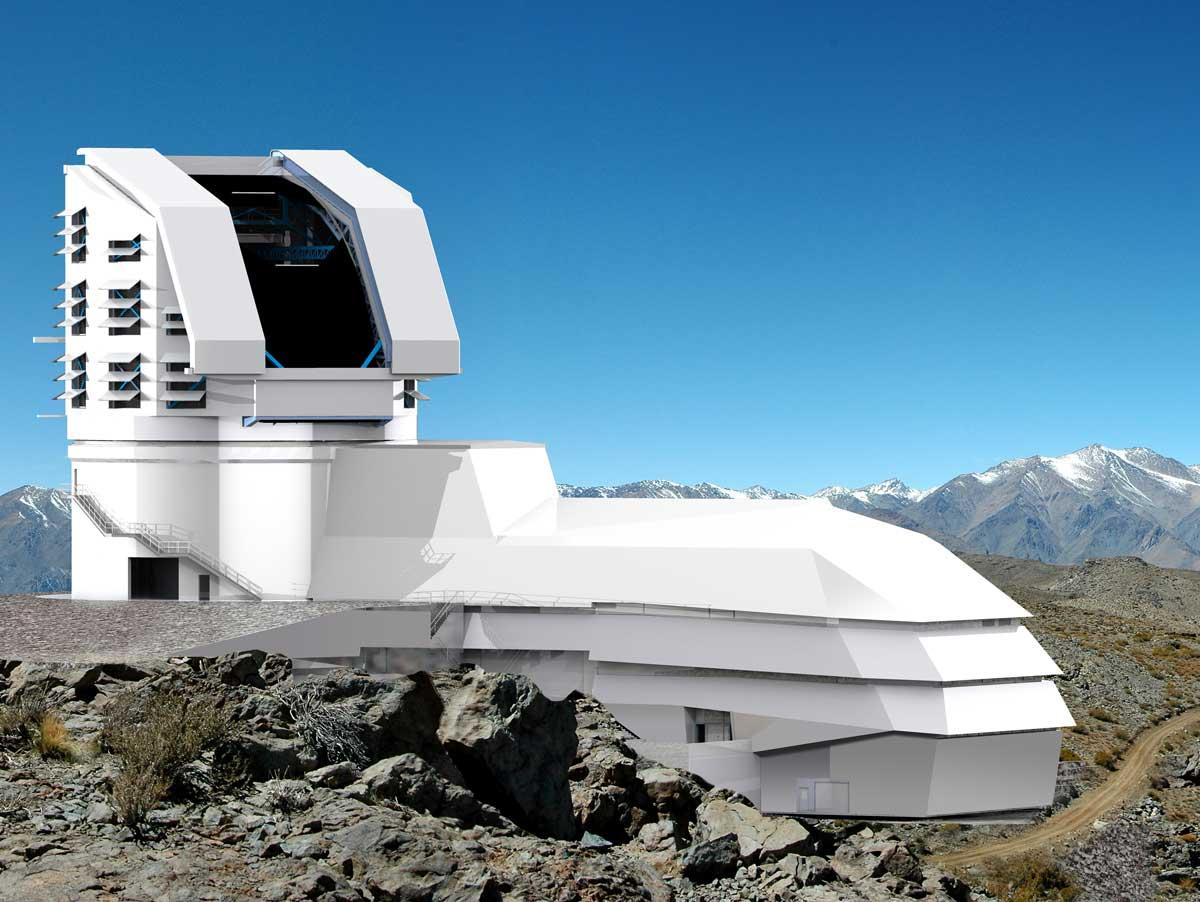
Physics Ph.D. Student Helping to Build World’s Largest Digital Camera

the size of a small car when its construction is complete.
(Image courtesy of LSST Project/NSF/AURA)
By John Zhu
Thanks to a grant from the Department of Energy, physics Ph.D. student Emily Phillips Longley is spending six months at the SLAC National Accelerator Laboratory in California, helping to build a camera.
A camera the size of a car.
Longley is part of a team building the Large Synoptic Survey Telescope (LSST), a facility in Chile that will boast the world’s largest digital camera and use it to conduct a 10-year survey of the sky over the Southern Hemisphere. The 3,200-megapixel camera will observe the entire southern sky every few nights and generate about 15 terabytes of raw data every night, Longley said.
“The data will be an enormous step forward for cosmology,” she said. “We will get a 10-year ‘movie’ of the universe as seen from the southern sky. It will allow us to map out the structure of the universe, and look at faraway objects to map out how it has evolved with time, allowing us to study such questions as the nature of dark energy.”
In October, Longley became one of 49 graduate students from across the country who were selected by the Department of Energy (DOE) for its Office of Science Graduate Student Research Program. The program provides supplemental funding for students to conduct part of their thesis research at a host DOE laboratory. For Longley, that meant a six-month stay at SLAC, where she had previously spent brief stints and became acquainted with the LSST project. This extended stint will allow her to push her project forward and gain valuable experience working on the camera, she said.
Longley is focusing on the electrical and optical testing of the camera while its focal plane is being built. Described as “the heart of the camera,” the focal plane is the area across which light from the telescope’s mirrors comes to a focus. It captures light from distant galaxies in a form that can be preserved.

(Image courtesy of LSST Project/NSF/AURA)
The LSST’s focal plane will be made up of 21 platforms called rafts, each containing nine sensors. The rafts can function individually as cameras or operate in groups. Longley is helping to collect data as the rafts are tested and installed.
This experience will also help Longley with her thesis work, which examines how the LSST’s gravitational lensing measurements—the deflection of light due to mass between an observer and a light source—can be used to study dark energy. Specifically, she is interested in weak lensing measurements, the tiny distortions of background galaxy light due to foreground matter structure in the universe.
Longley said because the effect of weak lensing is very small, it is necessary to examine a huge number of galaxies and to understand the systematic effects that go into measuring the effect. She is particularly interested in studying how anomalies in the LSST sensors can affect those measurements.
“By going to SLAC and studying the LSST sensors, I can work to characterize and correct for distortions in our images that can occur due to anomalies in the camera,” she said.